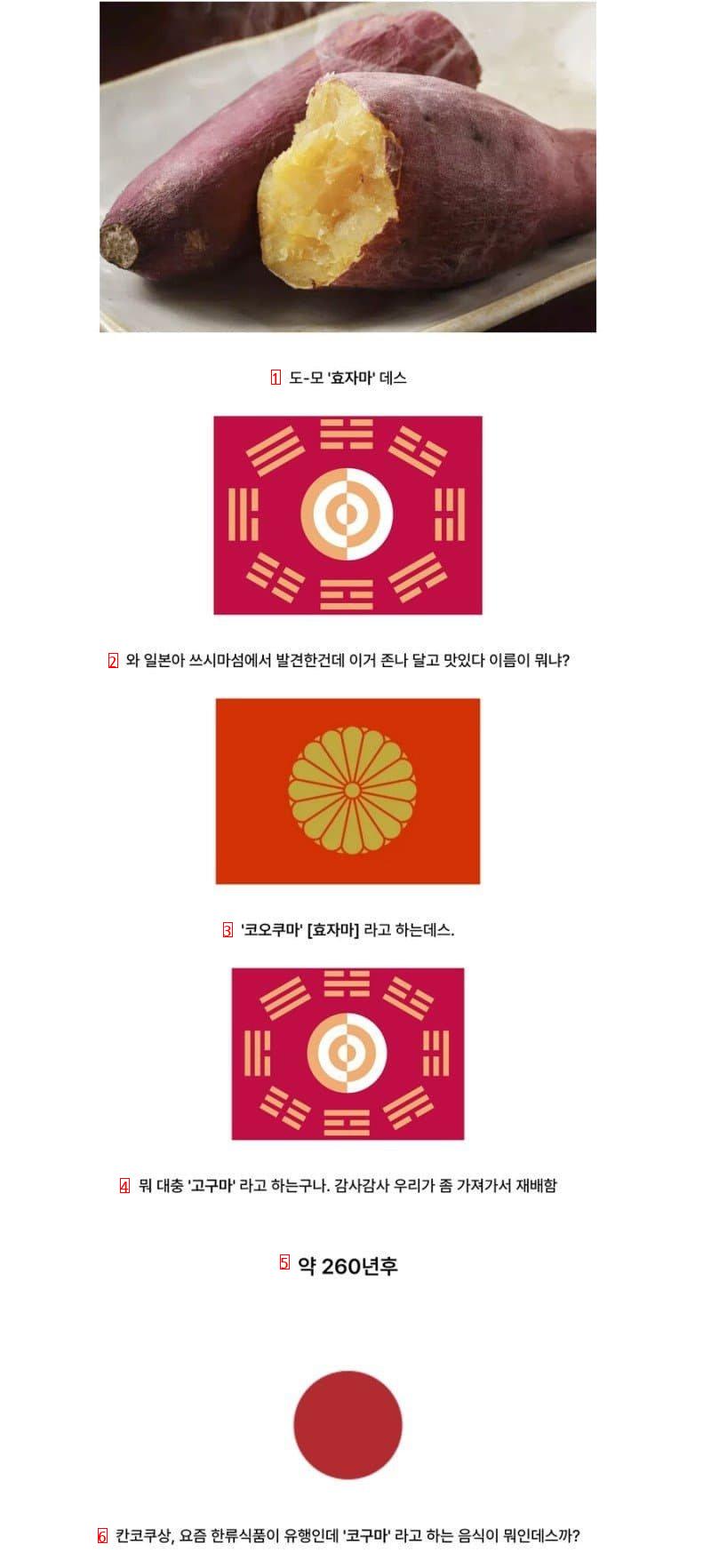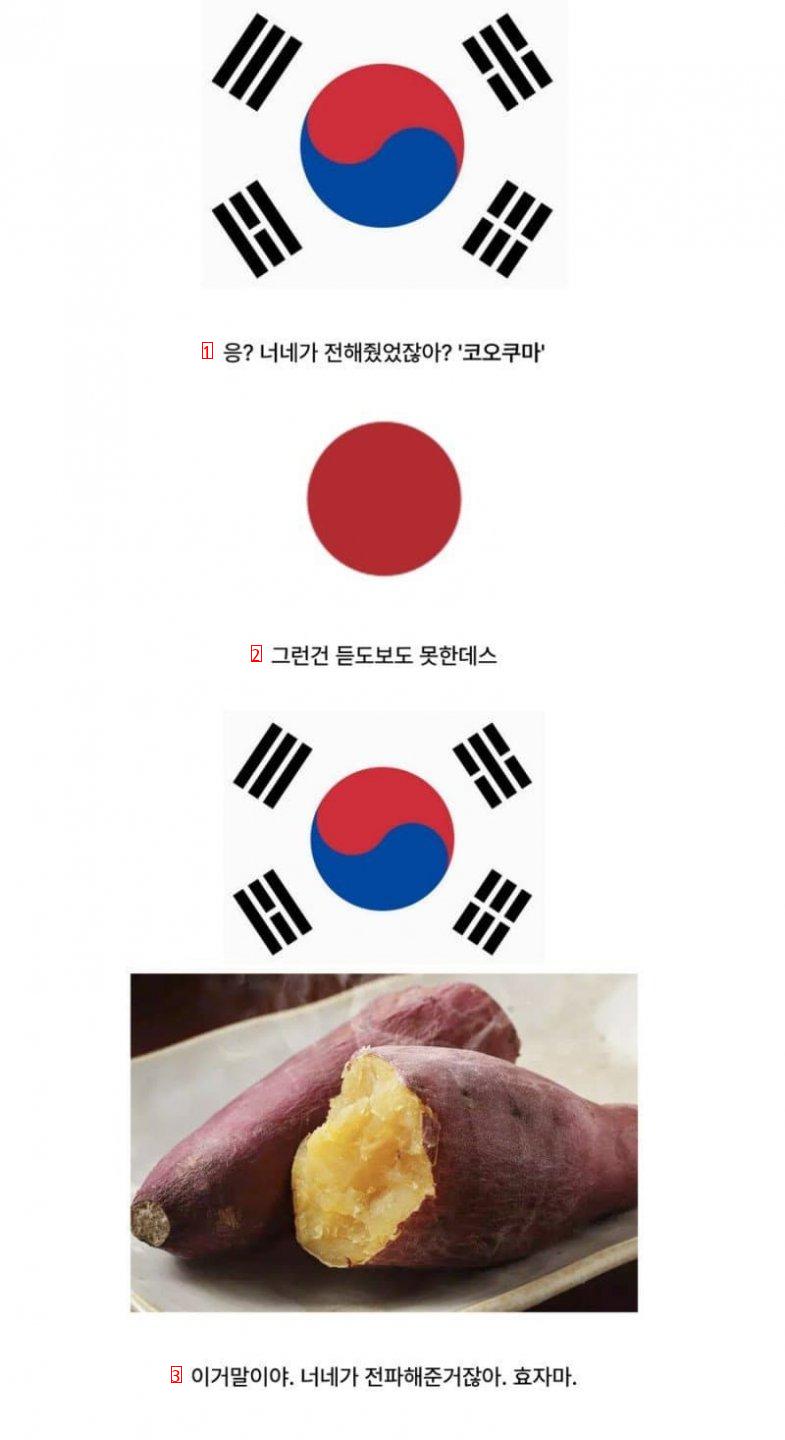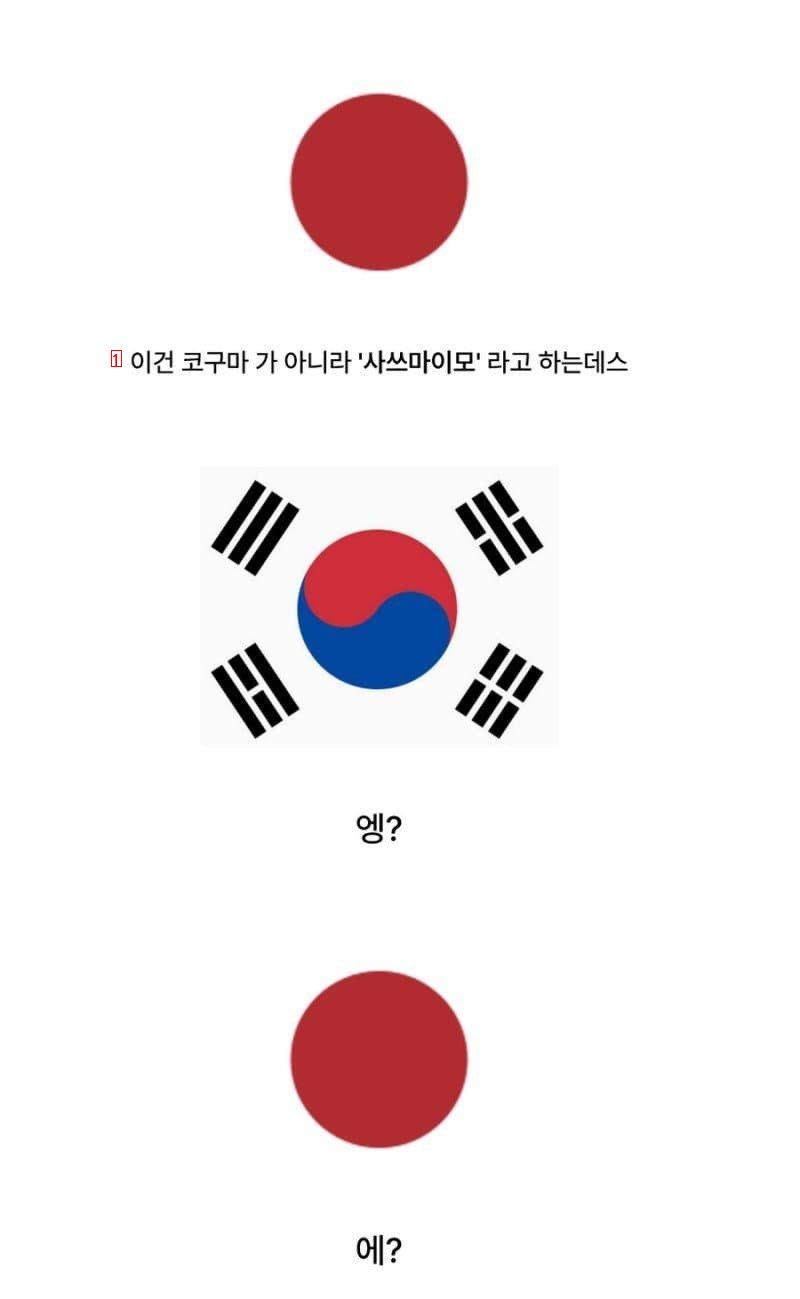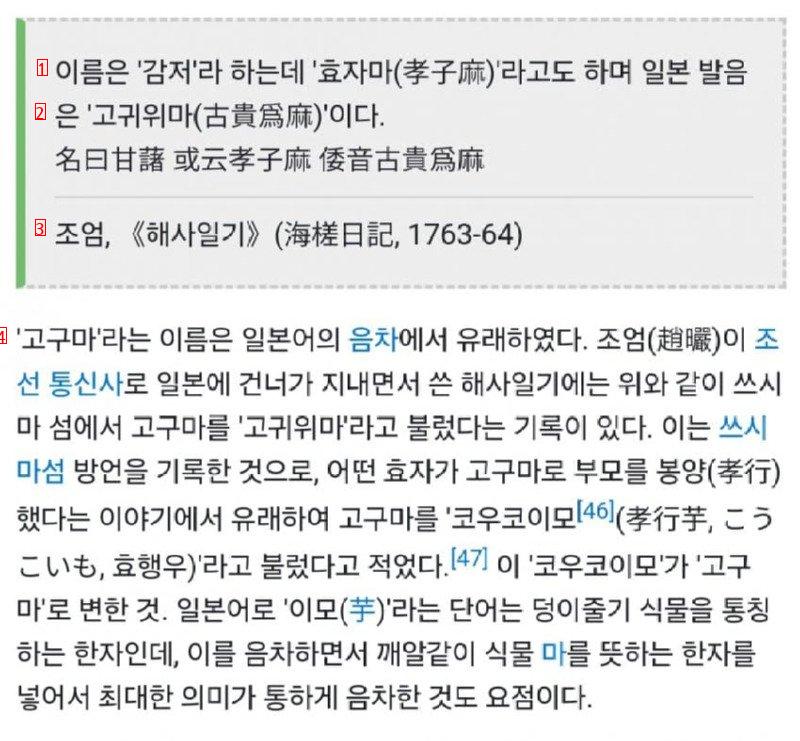
image text translation
(1)Domo filial piety death
(2)Wow, I found this on Tsushima Island in Japan. It’s really sweet and delicious What’s your name
(3)It’s called “Ko-kuma, Hyoja-ma”
(4)It’s roughly called a sweet potato. Thank you. We took some and cultivated it
(5)About 260 years later
(6)Kankoku Sang, Korean Wave food is popular these days. What’s the food called Koguma
(1)Yes, you told me that. Ko-Kuma
image text translation
(2)I’ve never heard of anything like that
(3)This is what you guys spread, son
(1)It’s called Satsumaimo, not Koguma
image text translation
(1)His name is Gamje, and it’s also called Hyojama 孝 麻 and Japanese pronunciation
image text translation
(2)be the 貴爲麻 of the Wimagogunate
(3)桂 Ilgi of the Maritime Affairs Department 1763–64
(4)The name sweet potato originated from the Japanese phonetic tea. In the maritime diary written by 趙曦 Choom while he was in Japan as a Joseon news agency, there is a record that the sweet potato was called Gobuiwima on Tsushima Island as above This is a record of Tsushima Island dialect, and it originated from a story that a filial son used a sweet potato to support his parents with a sweet potato, and wrote that the sweet potato was called 毛 Hyo Haeng-woo, a 芋 of Koukoimo 46 孝. 47 This Koukoimo has turned into a sweet potato. The word 羊 in Japanese is a Chinese character that collectively refers to a tuber plant, and it is also a point that it is as meaningful as possible by adding a Chinese character that means a plant horse like sesame seeds while listening to it
Tsushima and Japan have different names, but the first place they brought in was Tsushima